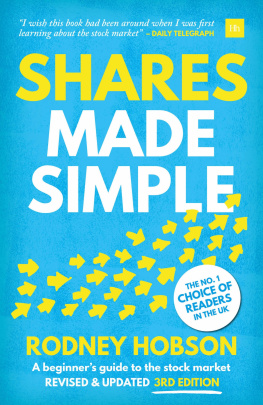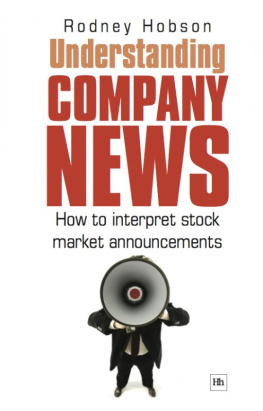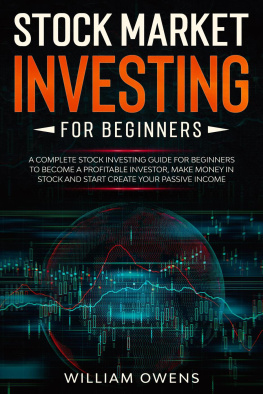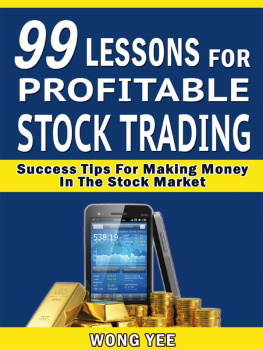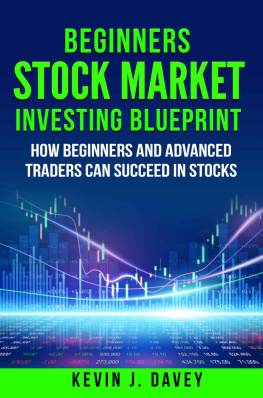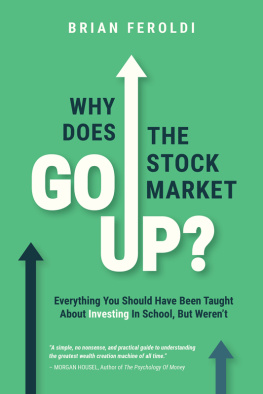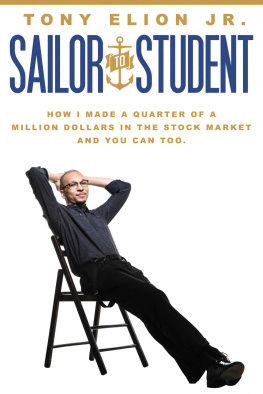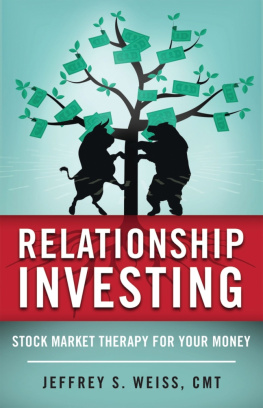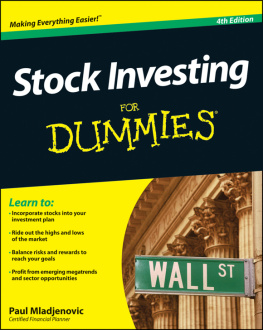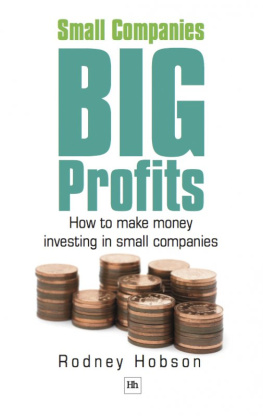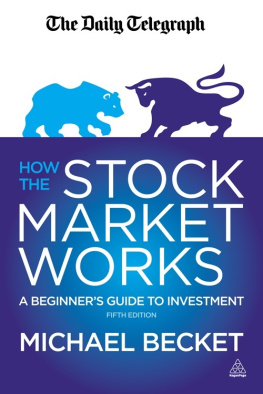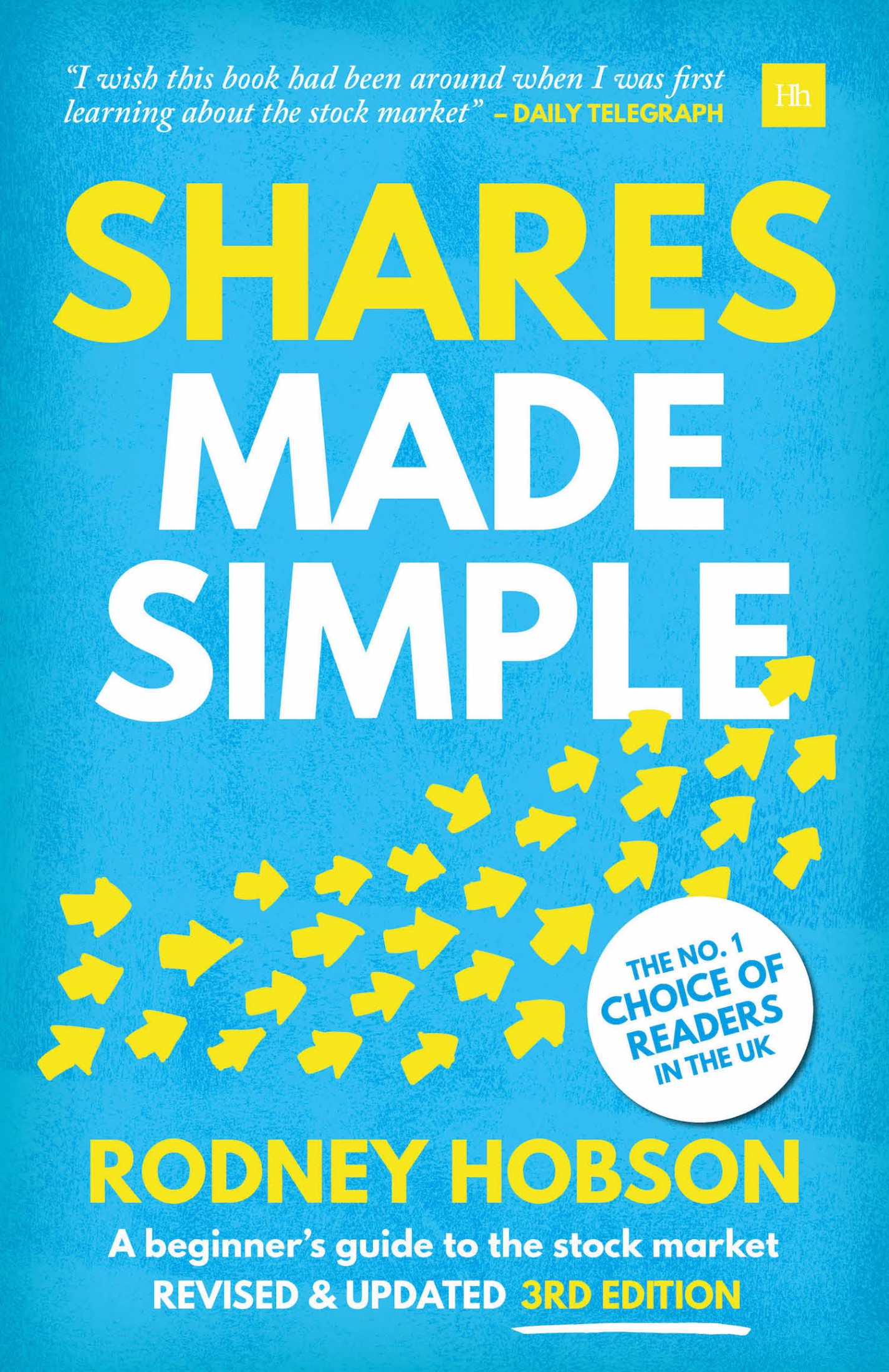Rodney Hobson is an experienced financial journalist who has held senior editorial positions with publications in the UK and Asia. Among posts he has held are news editor for the business section of The Times , business editor of the Singapore Monitor , deputy business editor of the Far Eastern Economic Review , head of news at Citywire, editor of Shares magazine and editor of the Hemscott financial website. He has also contributed to the Daily Mail , the Independent and Business Fran chise magazine.
Rodney is a speaker on investment issues, having appeared at the World Money Show, the London Investor Show and the Leeds Investor Show. He runs a seminar for beginners and less sophisticated share buyers each year at the London Investor Show.
He is qualified as a Representative under the Financia l Services Act.
Rodney is the author of five other books also published by Harriman House: Small Companies , Big Profits , a guide to investing in smaller companies; Understanding Company News , which explains company announcements and press reports; The Book of Scams , which helps readers to avoid falling victim of fraudsters; and How to Build a Share Portfolio and The Dividend Investor , both of which help private investors to pick suitable and profitab le investments.
Rodney is married wit h one daughter.
Rodney Hobsons personal website is www.rodneyhobson.co.uk . His Twitter handle is twitter.co m/rodneyhobson .
Preface
Who this book is for
T his book has been written for those who are new to stock market investment or who want to broaden and deepen their knowledge of how the stoc k market works.
Anyone wishing to make their own investment decisions, rather than hand their assets over to a fund manager or see them stagnate in bank and building society accounts, will benefit from this carefully crafted step -by-step guide.
Even people with little spare cash but who want to be informed of the financial world we live in can gain a greater understanding of how the City of London and other business c entres operate.
The book is also an invaluable tool for anyone who professionally needs to know about the stock market, from potential wheeler-dealers to advisers such as auditors and PR, to back office staff and students on business or media courses.
Structure of the book
The book is organised to take readers logically through the various stages of understanding stock market investment, with each new concept explained in simple term s as it arises.
It begins by outlining what shares are, why they exist and why people buy them, followed by a look at the London Stock Exchange and what i t is there for.
We discuss how to make sensible decisions on which companies to invest in, sifting the mine of information that is published through the stock exchange, and learn how to pick out the key points in company results, including warning signs.
With the basics explained, it is time to look at how to buy and sell shares, where to get advice and how to remain well informed.
Finally, we look at takeovers and mergers, arguably the most exciting aspect of the stock market. While investing is in the main all about patiently building your portfolio, takeovers offer the most scope for a quick, substantial gain for investors who, like those who have read this book, understand wh at is going on.
Introduction
M ost of us are too busy earning a living to make any money. As long as the day job produces enough income to get by on, why worry?
However, since the global financial crisis in 20078, the odds have become increasingly stacked against the honest toiler. Despite higher levels of employment, pay rises have generally struggled to keep up with rising prices. During 2017, average pay rose by just over 2% while inflation, fuelled by a fall in the value of the pound after the Brexit vote, hit 3%, squeezing real wages by nearly 1%. Such cash as ordinary people could manage to save has attracted pitiful rates of interest, typically as low as 0.1%, in bank sa vings accounts.
Getting on the housing ladder has become an unattainable dream for millennials (those born in the run-up to the year 2000), especially in London. Average UK house prices rose 2.6% in 2017, according to the UKs largest building society, Nationwide, and although that was lower than the 4.5% recorded in 2016 it was still ahead of wage rises.
The price of an average house is now six times average annual pay, double the ratio in the mid-1990s. Home ownership, the main means of wealth creation for postwar generations, has declined from 70% of the population to 62% in the past 15 years and is still falling; for those under 35, only 37% have managed to get a foot on the housing ladder.
The share of national income taken in pay has fallen over the past 50 years from around 55% to just above 50%. In other words, for every pound you earn, you get 50p and your employer gets 50p. Over the years, it is the owners of capital who have made the greatest gains, leaving ordinary mortals in their wake.
In theory, wealth is supposed to trickle down from the rich so that we all share the nations prosperity. Experience has shown that this simply doesnt happen.
One solution could be to give workers a stake in the company they work for. However, there has been little enthusiasm for creating worker shareholders over the years. Only 2 million of the UKs 32 million workers are members of a share scheme. (The John Lewis Partnership, the retail chain owned collectively by its workforce, is perhaps the most famous UK firm with such a scheme but it was implemented in the 1920s.)
But employee ownership is far from the only solution to the problem of workers sharing less and less in the n ations wealth.
There is an answer and it is available to all. It can be implemented right now. You may have even already begun to do it.
Buy shares yourself and not just in the company you work for but in a range of businesses. The revolution in the way major stock exchanges operate since the dawn of the computer age means it is easy and cheap for ordinary people to do so. And the rewards can b e considerable.

